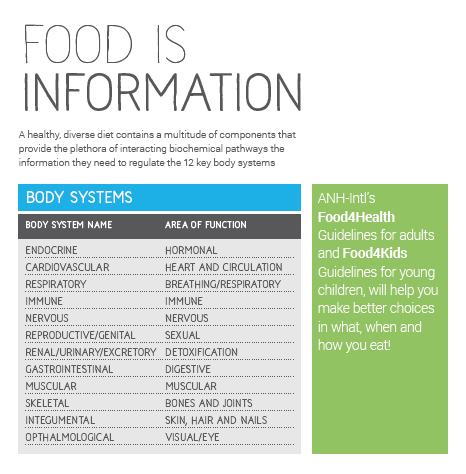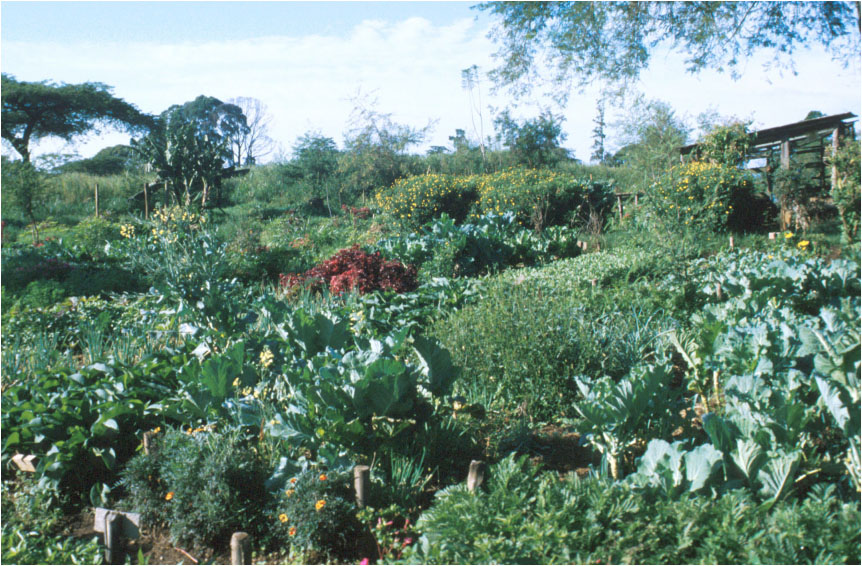Earth’s biodiversity is in decline. Be it animals or plants, or the microorganisms in our agricultural soils or guts, the number of species at risk of extinction as a result of human activity grows every day. Globalisation and industrialisation have had other untoward effects as well. One of these is the dramatic change not only to the types of food available to us, but also to the diversity of nutrients found in those foods. Today’s plant foods come with a very different nutrient profile compared with those of our paleolithic ancestors. The same can be said of the farm animals on which many humans continue to rely on as a major component of their protein intake. All of this, while we continue to carry genes that have barely changed from those of our Paleolithic ancestors, must have consequences. As you'll discover here, the consequences of what is referred to scientifically as 'dietary simplification' are enormous. So much so that it likely underpins a significant part of the chronic disease crisis we see today.
Why does diversity matter?
Put simply, and as a general rule of thumb, the more diverse the range of foods that we eat and the greater the range of nutrients, the more protection our body has against disease — and the better its ability to promote wellness.
Figure 1: Human Body Systems (source Food4Health Campaign; Food and You leaflet)
We sometimes forget just how remarkable nature is in its effort to find balance within and between organisms in ever changing environments. Food is so much more than just energy in the form of calories. Food isn’t just fuel, it’s literally information that allows us to gain and maintain health. We have evolved alongside our natural foods, benefiting from complex nutrient packages that allow nutrients to work synergistically together so our bodies get the most out of our meals. Through food, we build, repair and maintain our cells, tissues and structures.
Phytochemicals is the term used to describe plant-based nutrients. They remind us that not all chemicals are dangerous! These are the compounds that give fruits and vegetables their colour, flavour (including bitterness) and smell. In the plant, these phytochemicals defend against disease, attack by insects and microbes, as well as environmental stressors such as ultra-violet light, cold, heat, lack of water, poor soil quality and pollution. Different plants have developed specific phytonutrients for particular defensive needs e.g. resveratrol in grapes and berries to protect against fungal infection, stress and UV light. In us, these phytochemicals provide essential protection against diseases e.g. cancer, neurodegeneration, diabetes and cardiovascular disease to name a few (see table 2 for references). The more we reduce the diversity of foods we eat, breed plants and raise animals to increase corporate profits, pander to our sweet tooth and declining palates e.g. sweeter fruits and vegetables, highly processed foods and high-yield crops — the more we remove the very nutrients our body has evolved with to keep it healthy and disease-free.
A diverse agro-ecosystem in Kitale, Kenya. The proper place to produce nutrient-dense foods that promote health and reduce disease risk. A far cry from a factory farm or monoculture.
Our entire planet has evolved using diversity to stay healthy and in balance. Just look at the diversity in a rainforest or a coral reef and you’ll understand that our bodies, and our environment, are mirror images. We need layers of diversity to maintain stability within living systems, to stop one species taking over to the detriment of another, be they human, animal, plant or microbial.
Below is a brand new infographic we've created to bring some key facts and figures alive.
Click on the images below to download the full PDF and find out the latest on dietary simplification and the loss of diversity crisis we're facing.
Infographic references - click here
Easy actions to improve your diversity
- Follow the plant-based components of the ANH-Intl Food4Health guidelines.
- Aim to eat between 7-10 portions of vegetables and just 2-3 servings of fruit every day. Fruit is definitely good for us, but it’s still a source of sugar.
- ‘Eat a Rainbow’ by making sure you cover the phytonutrient spectrum which includes all 6 colours every day to maximise your health benefits.
- Start growing your own and use heirloom/heritage seed varieties wherever possible. You can still grow herbs and veggies in pots, growbags and troughs on patios and windowsills if space is an issue.
- Buy from organic box (CSA) schemes, which are delivered to your door and are often much cheaper than supermarket produce. Deliberately choose veg you’ve not seen or cooked before to increase the number of plant foods you eat. There are a wealth of recipe ideas on the net!
See table 2 for examples of phytochemical disease risk reduction relationships.
Table 2: Examples of phytochemicals, the foods they can be found in and some of their health benefits
|
Phytochemical(s)
|
Plant-Colour
|
Plant-Source
|
Potential-health-Benefits |
|
Carotenoids (such as beta-carotene, lycopene, lutein, zeaxanthin)
|
Orange, Yellow, Red
|
Red, orange and green fruits and vegetables including broccoli, carrots, cooked tomatoes, leafy greens, sweet potatoes, winter squash, apricots, cantaloupe, oranges and watermelon |
May inhibit cancer cell growth, work as antioxidants and improve immune response Protective role against cognitive decline associated with ageing Role in protection against hepatoxicity
|
|
Flavonoids (such as anthocyanins, flavonols, flavanones) |
Purple, red, blue, black
|
Apples, citrus fruits, onions, coffee and tea
|
Anti-oxidative, anti-inflammatory, anti-mutagenic and anti-carcinogenic propertiesCardiovascular protective |
|
Indoles and Glucosinolates (sulforaphane)
|
Green, white
|
Cruciferous vegetables (broccoli, cabbage, collard greens, kale, cauliflower and Brussels sprouts)
|
|
|
Isothiocyanates (sulforaphane) |
Green, white
|
Bok choi, broccoli, Brussels sprouts, cabbage, cauliflower, horseradish, kale, kohlrabi, mustard, radish, rutabaga, turnip, and watercress |
May induce detoxification of carcinogens, block tumor growth and work as antioxidants
Help with management of blood glucose, particularly in diabetic patientsHelps reduce inflammation
|
|
Polyphenols (such as ellagic acid and resveratrol)
|
Green, Purple
|
Green tea, grapes, wine, berries, citrus fruits, apples, whole grains and peanuts
|
May prevent cancer formation, prevent inflammation and work as antioxidants Gut protective - reduction of inflammation in inflammatory bowel disease |
|
Terpenes (such as perillyl alcohol, limonene, carnosol) |
Red, yellow, green
|
Cherries, citrus fruit peel, rosemary |














Comments
your voice counts
29 June 2017 at 11:48 am
Great article. Thanks. But I find the infographics difficult to read and fear I am missing important points.
A related issue you may be able to help with is that you say 'as a general rule of thumb, the more diverse the range of foods that we eat and the greater the range of nutrients, the more protection our body has against disease — and the better its ability to promote wellness' and the Nutrition and Health Claims Regulations Article 10.2a requires 'a statement indicating the importance of a varied and balanced diet and a healthy lifestyle' whenerver a health claim is made. My question is what is the nature of the proof of the validity of these two statements?
I have two interests here - 1) NHCR requires scientific proof of claims and rejects traditional data and broad consenus yet requires the above claim that I guess is based largely on broad consenus and cannot be proved with the rigour that is being required for approval of health claims.; 2) as a disorganised male living alone I eat more or less the same thing every day though I do eat quite a number of different food plants each day. Strictly speaking this is not a varied diet. Is it range of food material that is needed rather than day to day variety per se?
29 June 2017 at 5:49 pm
Hi David
Thank you for your comment. If you click on the image of the infographic in the article it will open as a PDF to allow you to change its size so it is easily readable.
We have updated the article to include additional supporting references. In regards to the range of food material that is needed it should be both. Different foods on different days and as wide a variety as possible overall.
Warm Regards
Melissa
Your voice counts
We welcome your comments and are very interested in your point of view, but we ask that you keep them relevant to the article, that they be civil and without commercial links. All comments are moderated prior to being published. We reserve the right to edit or not publish comments that we consider abusive or offensive.
There is extra content here from a third party provider. You will be unable to see this content unless you agree to allow Content Cookies. Cookie Preferences